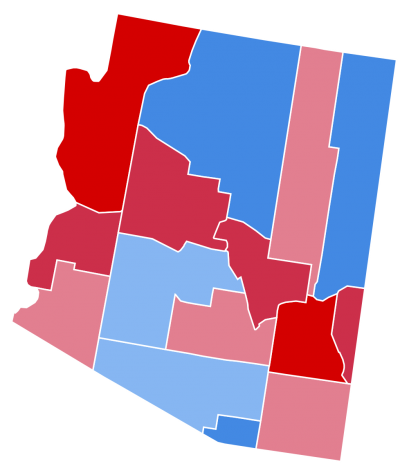Why Arizona Went Blue
Joe Biden has been called the winner of the US Presidential Election, having received 290 electoral votes and over five million more individual votes than Incumbent Donald Trump. The election was a close contest on election day, but since then, Biden has pulled comfortably ahead after winning the swing states of Pennsylvania, Michigan, Wisconsin, Georgia,

and significantly Arizona, a former Republican stronghold. Now, as the dust from the election settles, it’s time to ask what happened in Arizona, a state that was once responsible for sending Barry Goldwater, the father of modern conservatism, to the US Senate.
Arizona has 11 electoral votes, and it has been a reliable part of any Republican candidate’s path to the White House for decades: the last time it voted blue was for Bill Clinton in 1996. In fact, Trump felt so confident in his ability to win the State that he only visited it 6 times during the election cycle. In comparison to the 14 times, he visited the other swing state of Pennsylvania.
Before the election, Republican Officials would even tell CNN that they were “not concerned about Arizona turning blue.”

Why did Biden win then? Most analysts point to the growing Latino population in the State and the grassroots efforts by many organizers to unite these voters in the face of harsh immigration laws as instrumental in the shift. This grassroots movement was initially created in response to the anti-immigrant laws enacted by former Maricopa County Sheriff Joe Arpaio. It had been responsible for an Arizonian Senate seat flipping democratic in the midterm elections. Now, in 2020 the movement is still active and may have been what won Arizona for the President-Elect.
After the election, Laura Dent, the executive director of Chispa Arizona, a coalition organization that has worked to engage Latino voters in the State, stated that “This year was a victory for the decade-plus of work in this state.”
Other, more idealistic analysts, also point to the influence the late John McCain may have had on the election. John McCain was an Arizonian who had comfortably controlled one of his State’s senate seats since 1987 and remained popular until his death in 2018. However, John McCain had also long been at odds with Donald Trump, and the latter would mock the former relentlessly, even after his death. As such, some analysts reason that Trump’s attacks on McCain, and the late senator’s widows’ subsequent democratic endorsement, could have turned some key voters against the sitting President.
No matter what factors were responsible for the state turning blue, it’s clear that Arizona is now in play for both parties and no longer a Republican stronghold.
Luke McMahon is a Junior at Hamilton Wenham and a Staff Writer for The General Consensus. Luke had always been interested in Journalism and this class...











